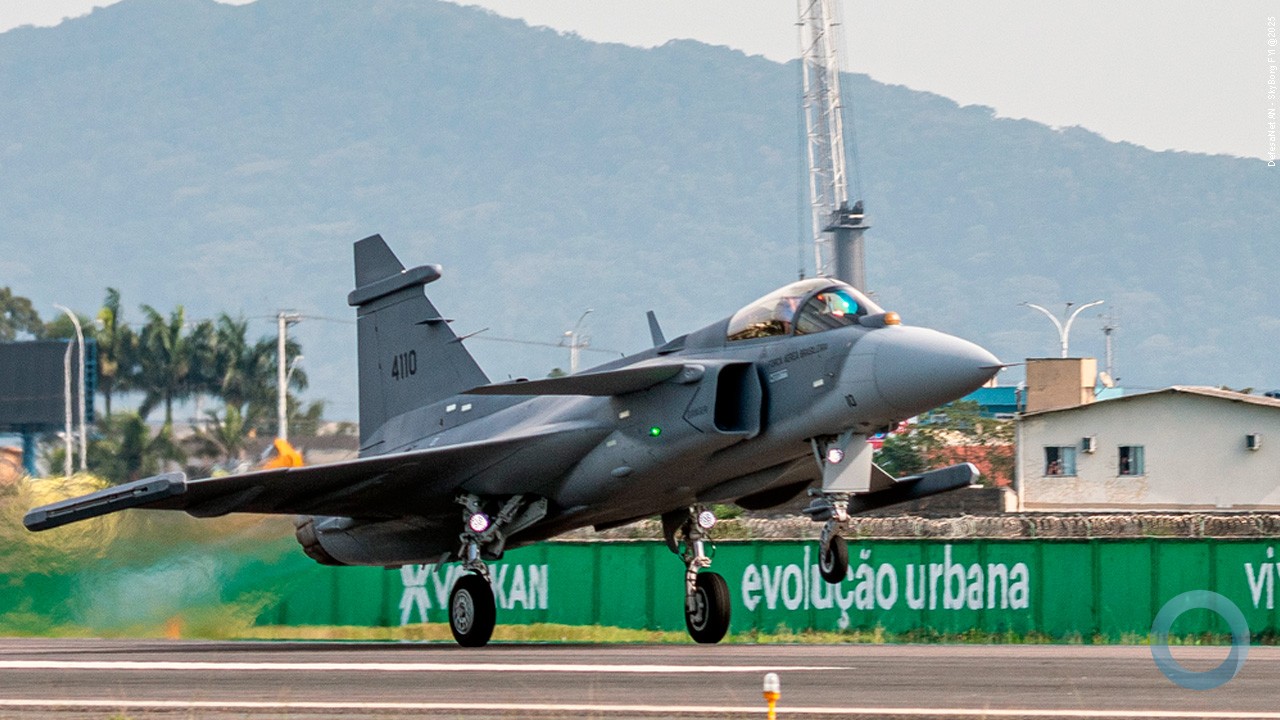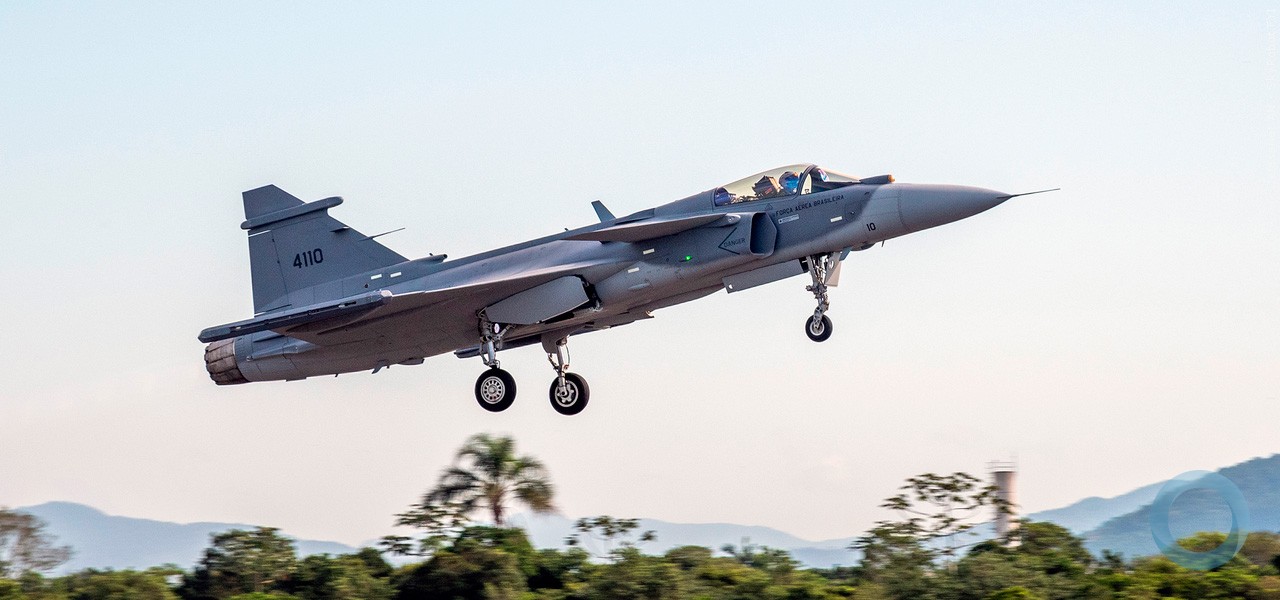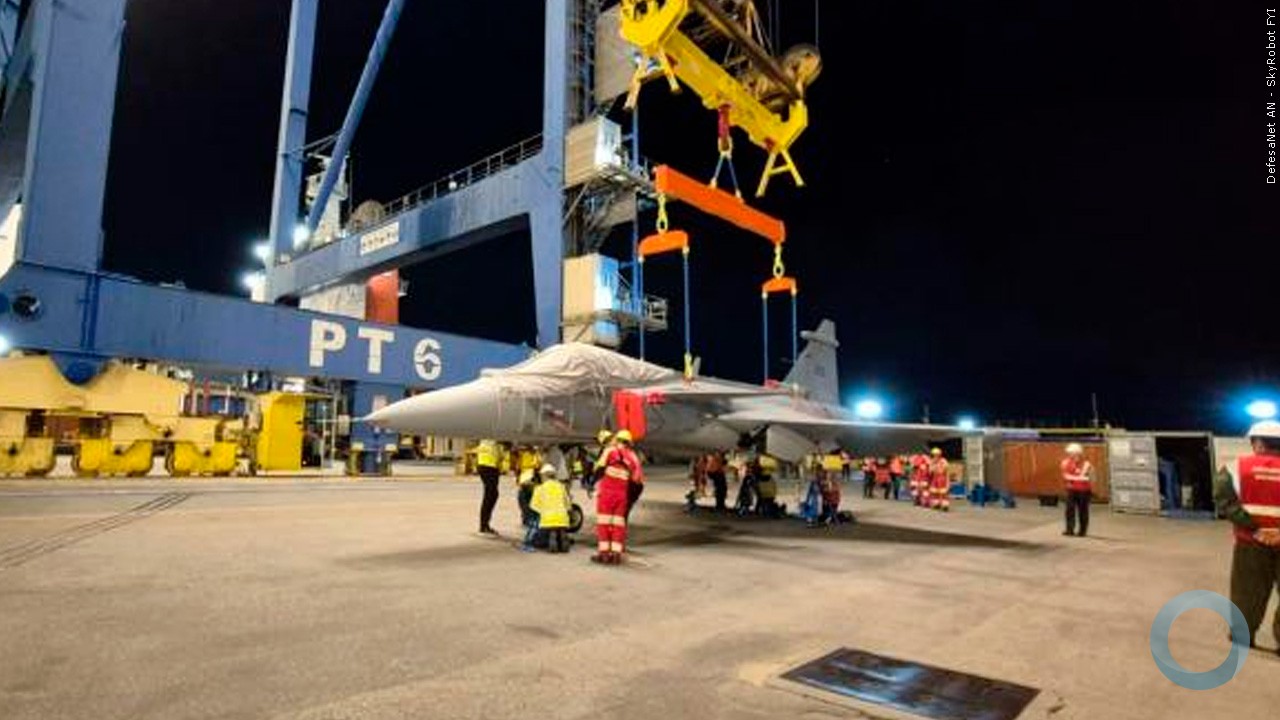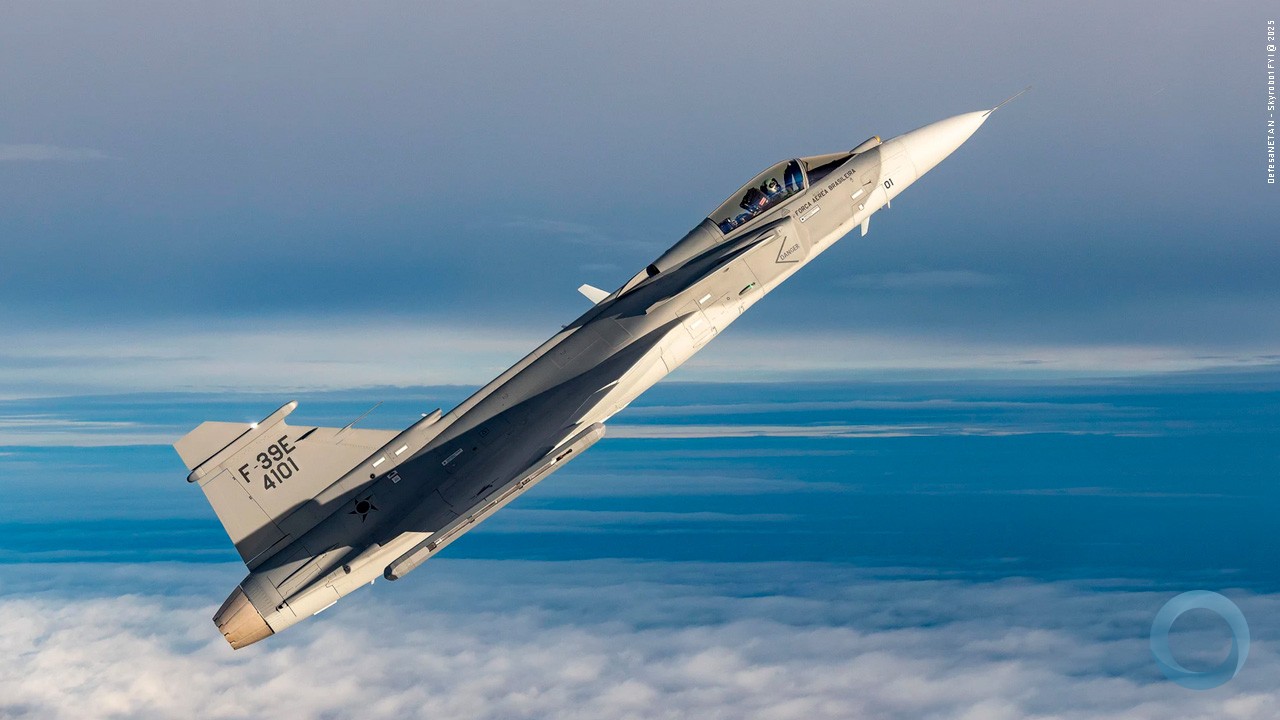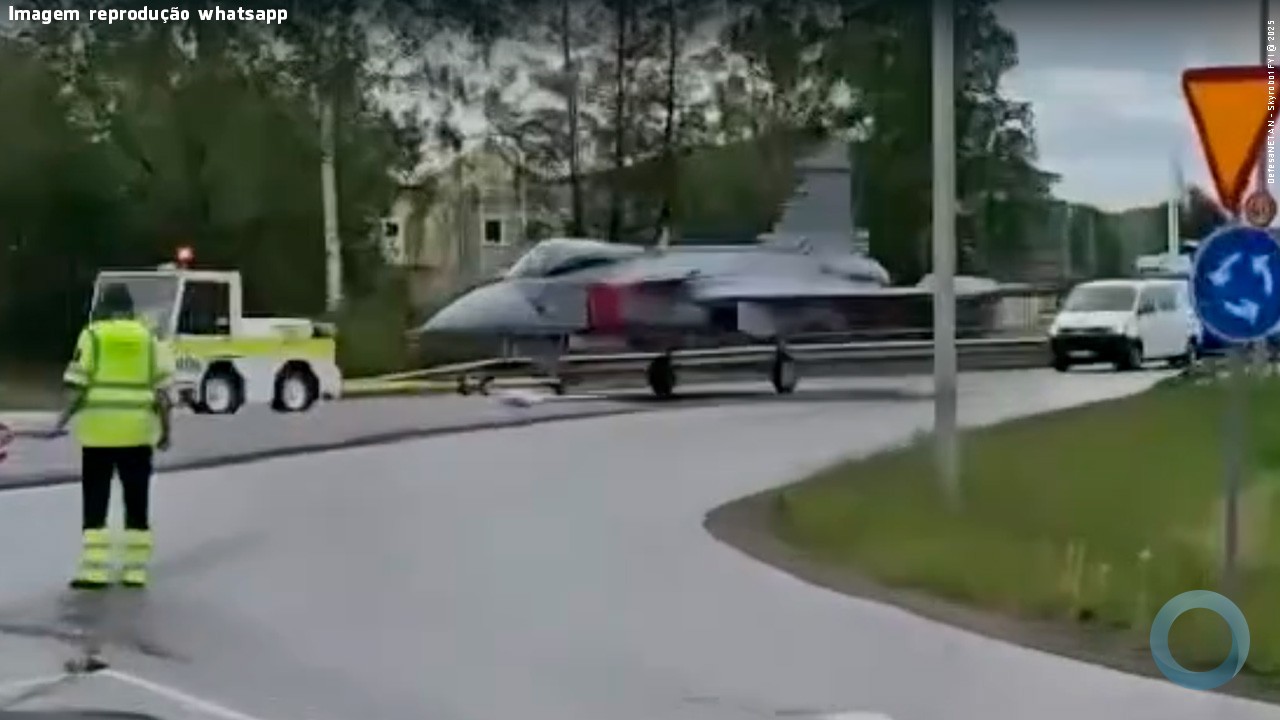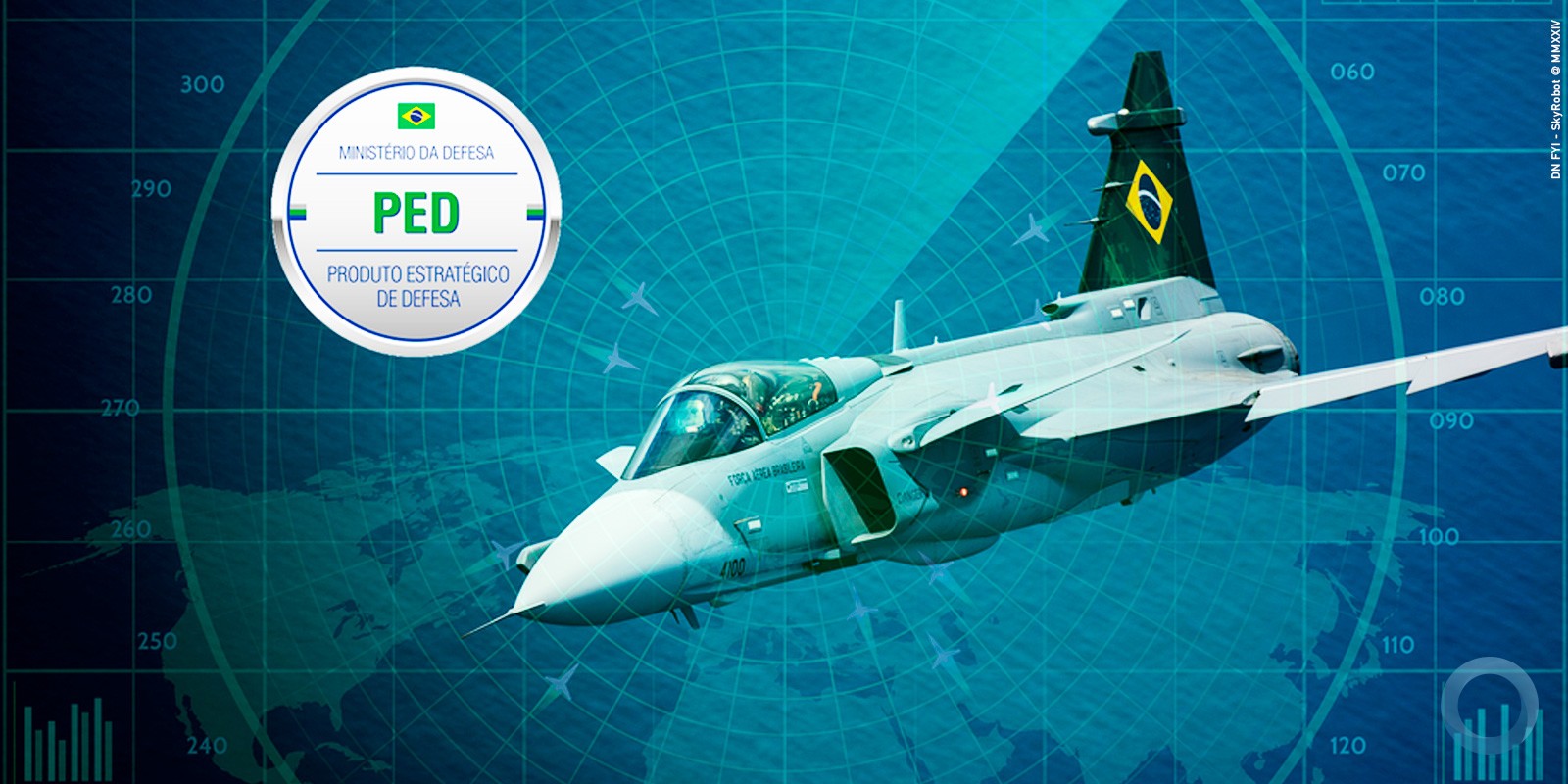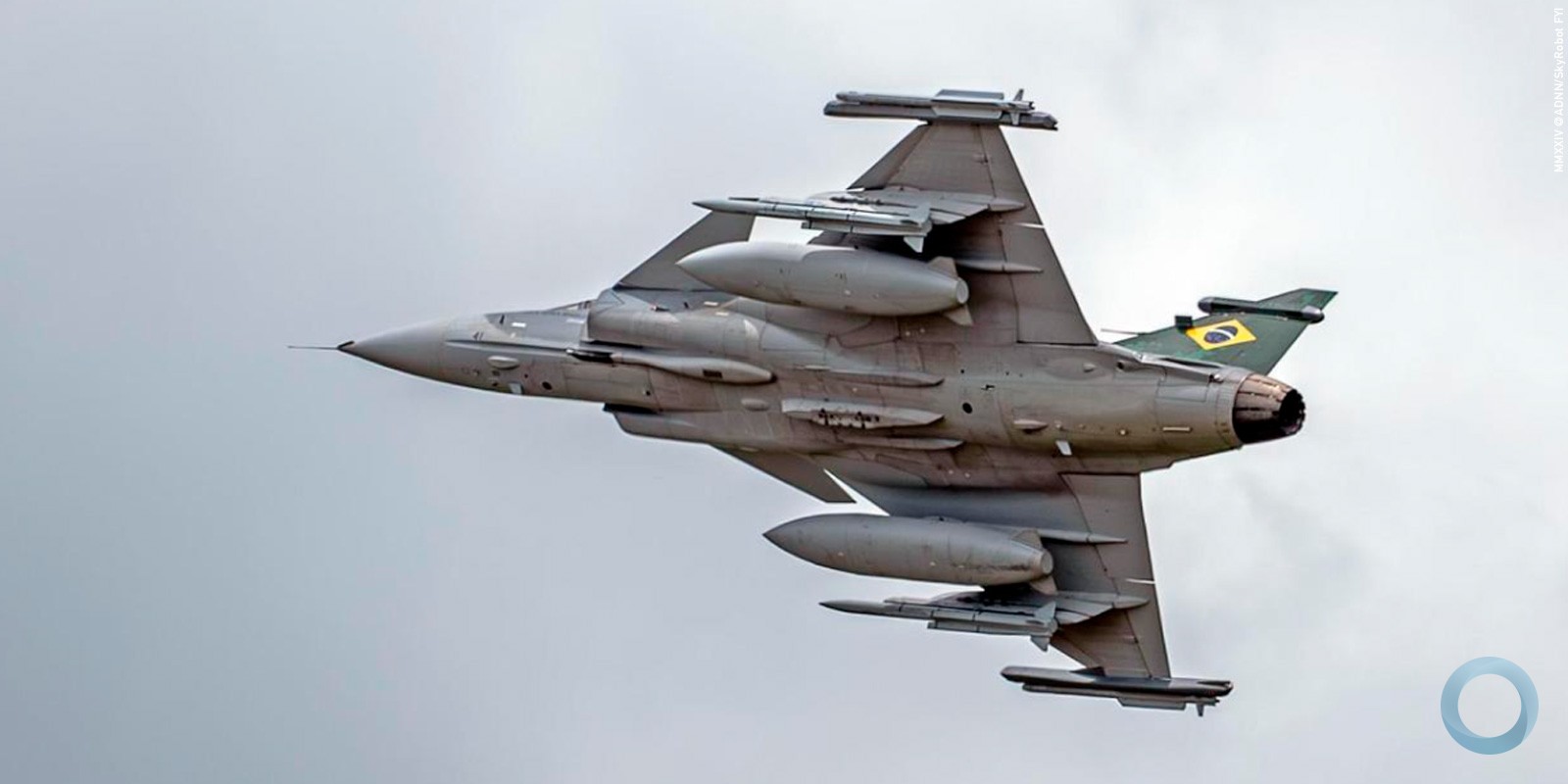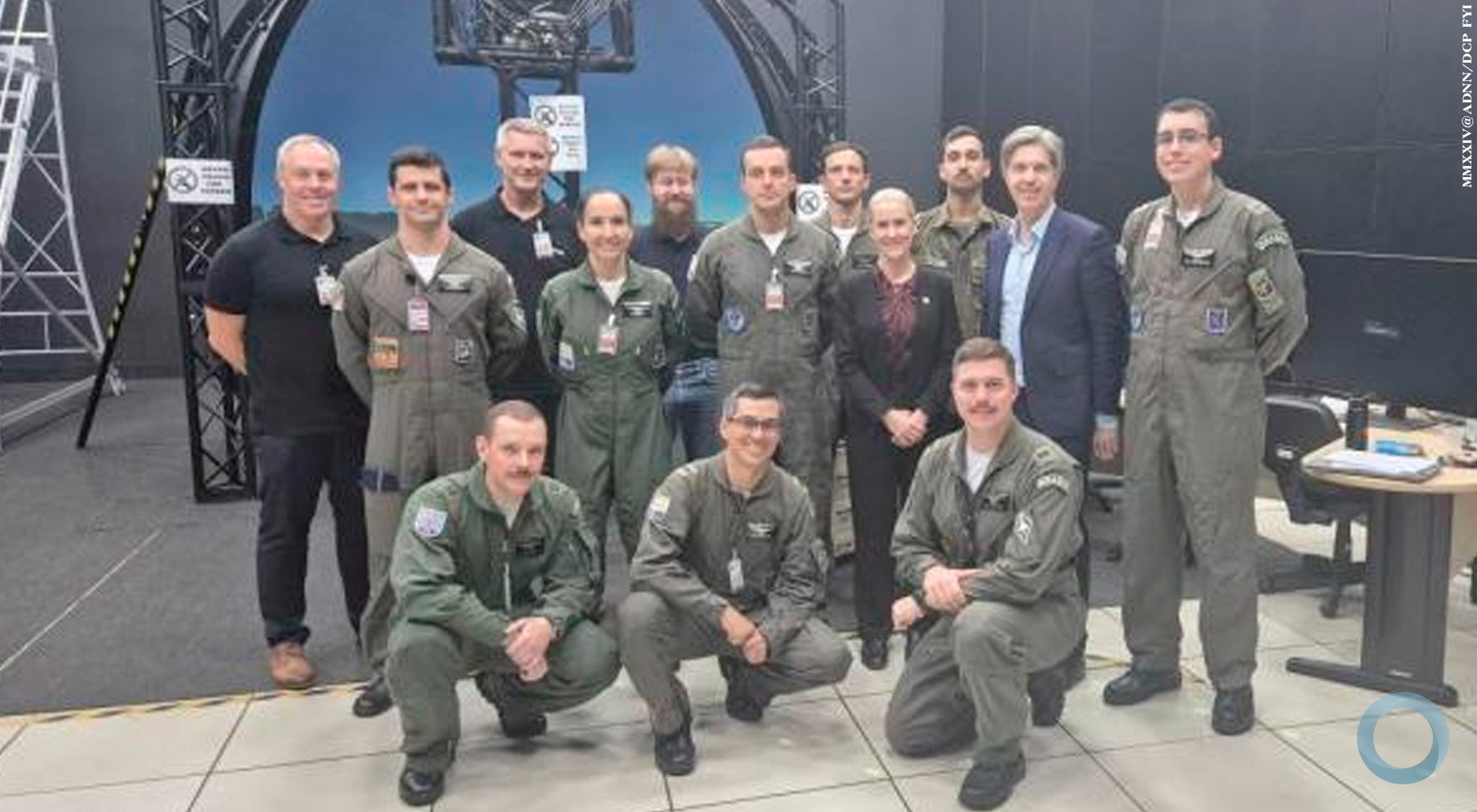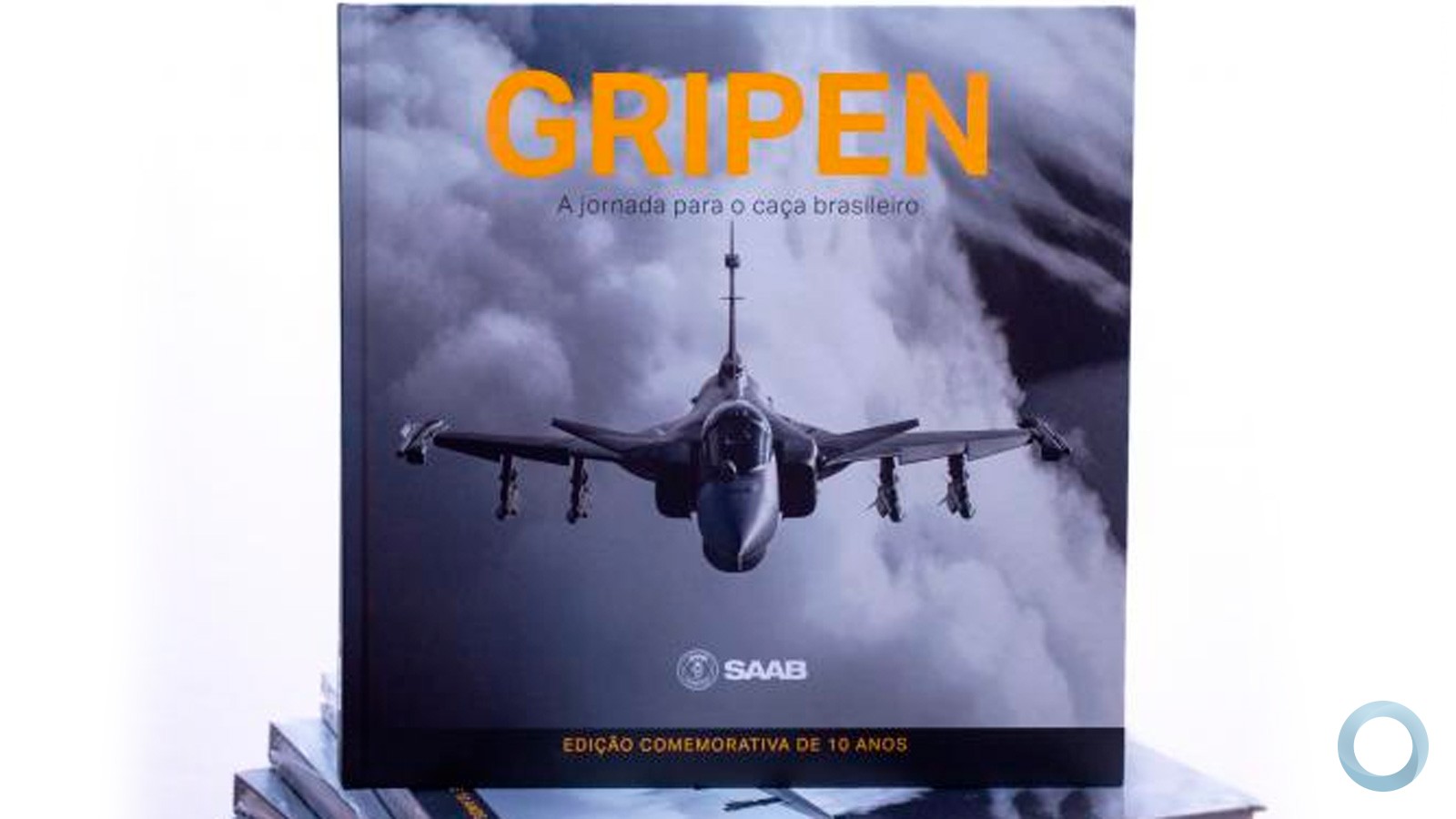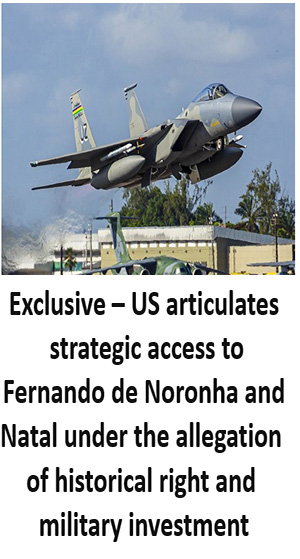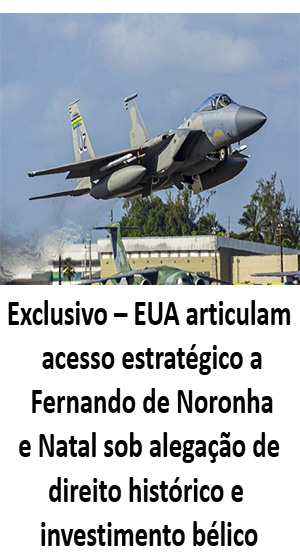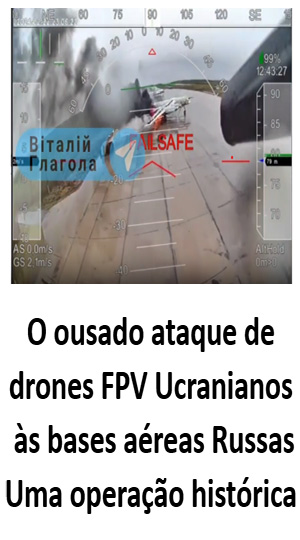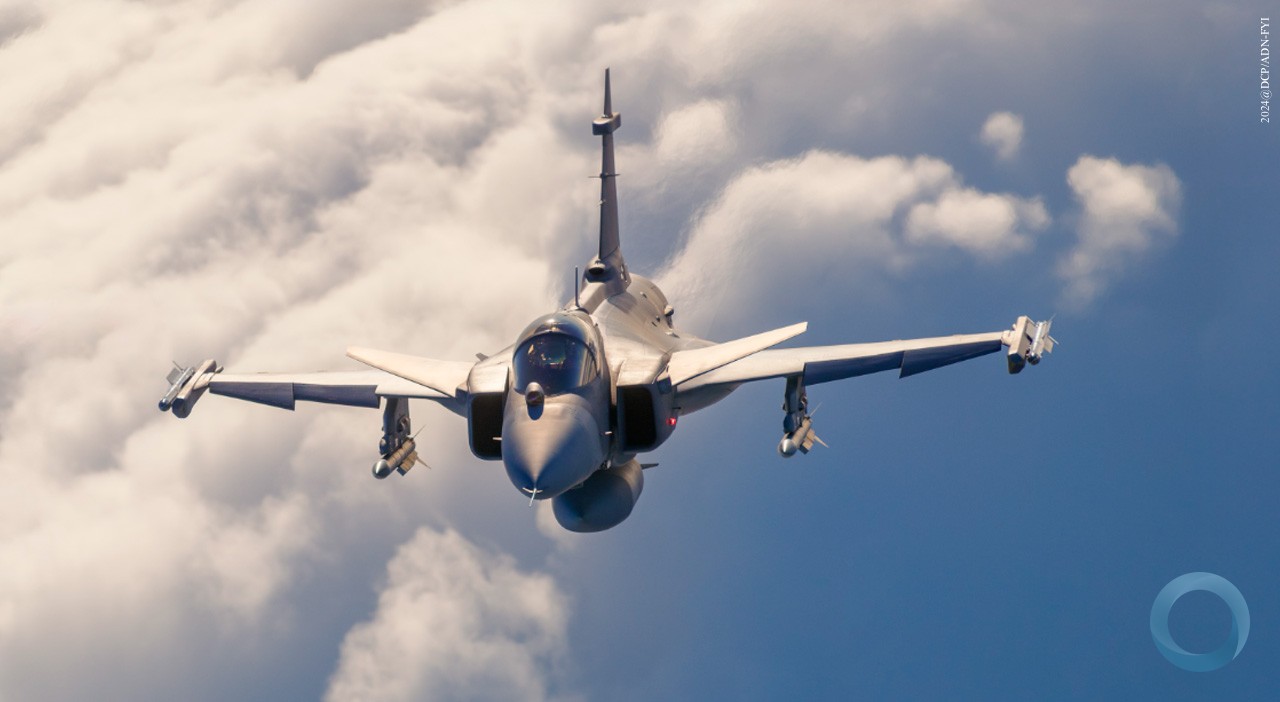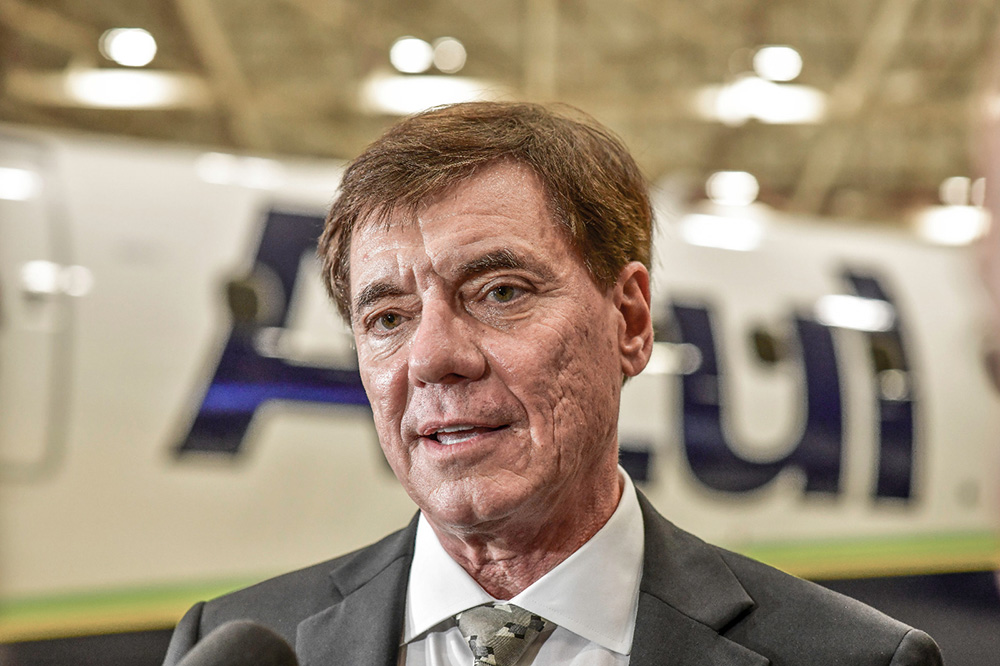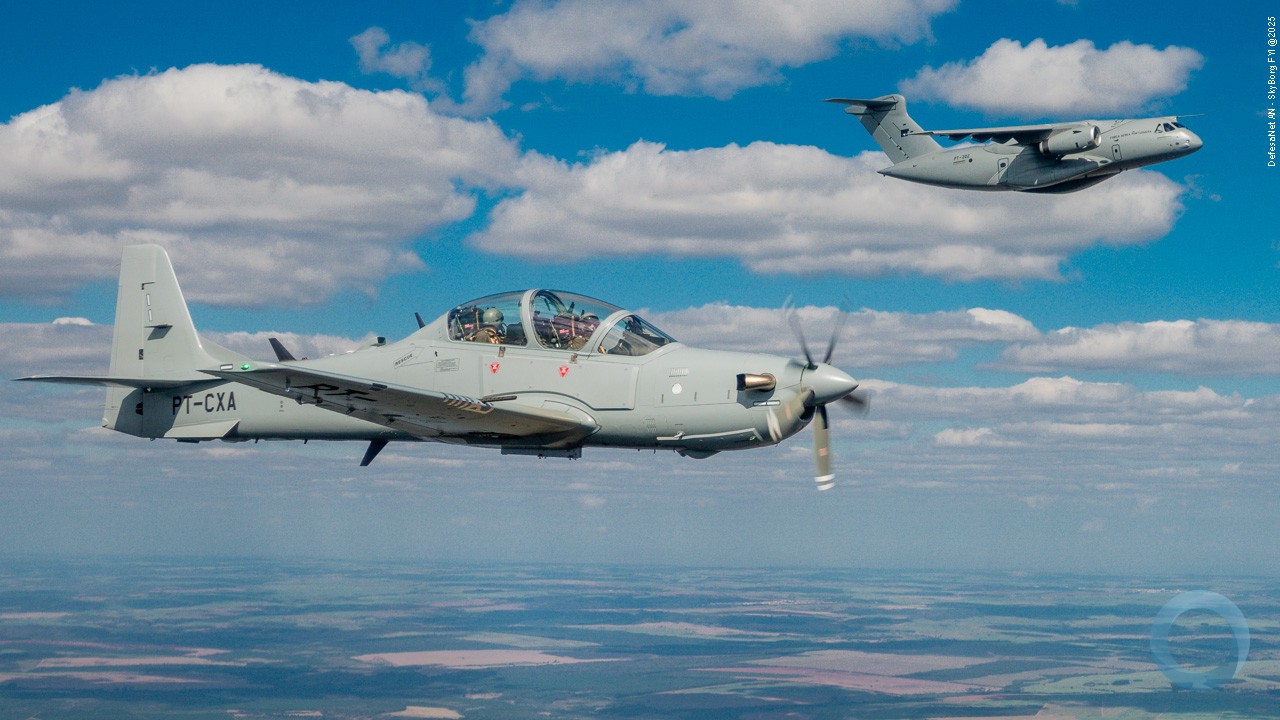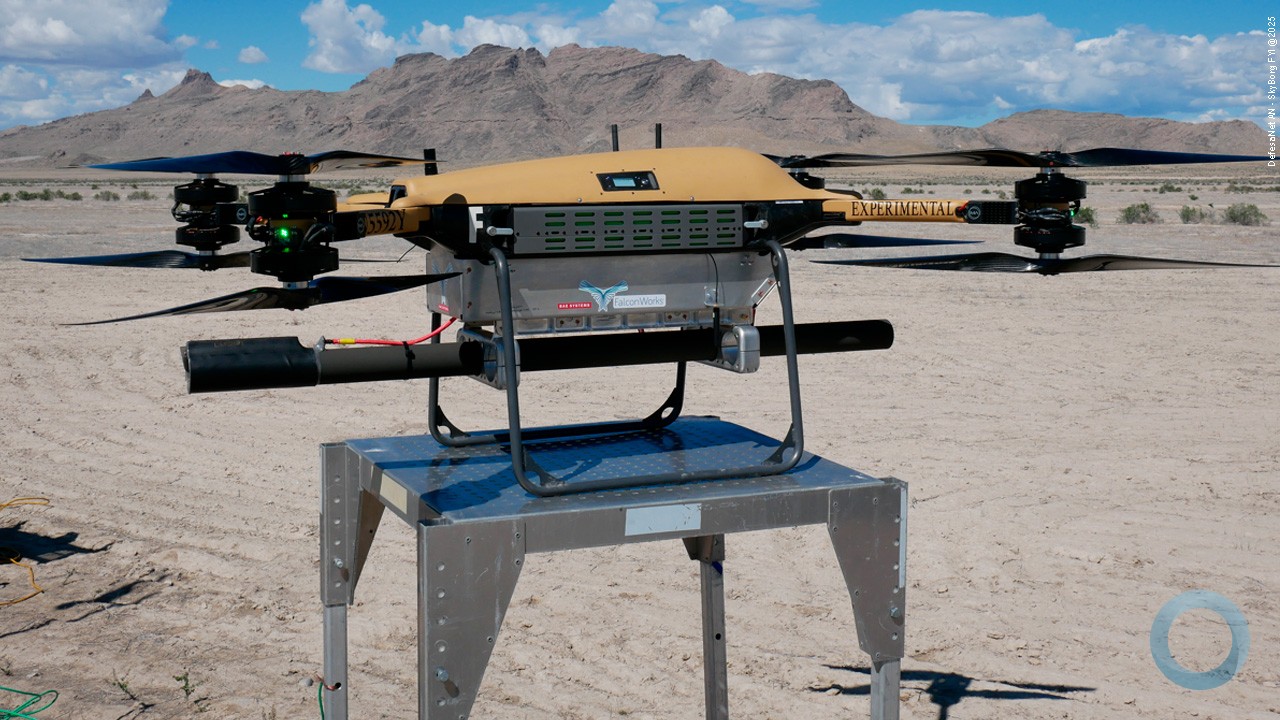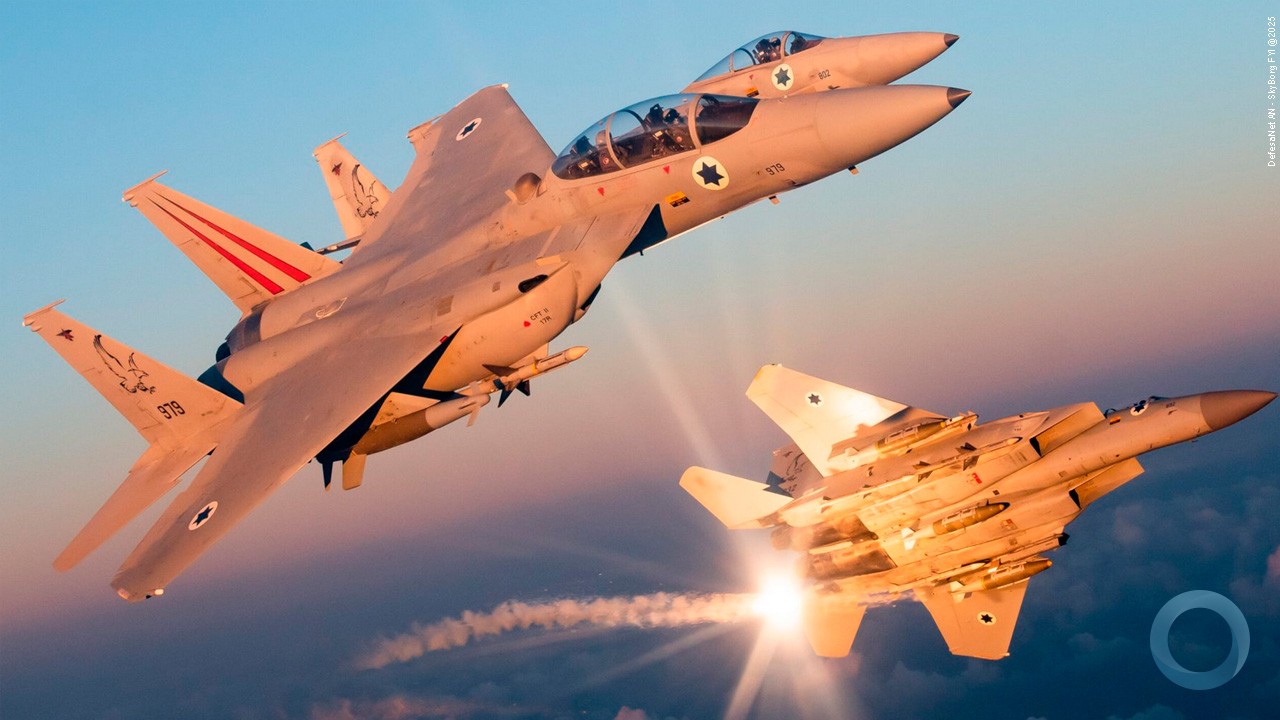With a combined inventory of 700 fixed-wing and rotary-aircraft, the Brazilian Air Force (Força Aérea Brasileira – FAB) and Naval Aviation (Aviação Naval Brasileira – AvN) flies the largest air-arm in the Southern & Latin-American hemisphere and is only second in the Americas after the USAF. As part of its current ‘National Defence Strategy’, a main objective is to support “National Independence through a superior autonomous technological capability and the strengthening of the industrial defence base”.
The route to achieving this lies in encouraging and welcoming partnerships with foreign companies and countries. During the last International Fighter conference (London, November), GEORG MADER discussed key programmes for the FAB with Brigadier Jose Crepaldi, Head of the Brazilian Air Force’s Programmes Office…
DIB: A few weeks after the October 27th contract was signed with Saab over the final decision for the FX-2 programme to be filled by 36 Gripen E/F fighters, you disclosed that this number was not ‘final’ and will potentially rise to 108! This was quite a surprise for the fast jetcommunity…
CREPALDI: [smiling] Yes, it obviously was! But it wasn’t sensational. The final allocation is of course not yet financially covered, but we had our feasibility study regarding the numbers of our new fightertype back in 2007. Why 108? The idea behind this figure is to have standard, single-type fleets within our forces, which includes fighters. They’ll be introduced to the FAB in three batches.
DIB: But consisting of single- and two-seater versions in all of these batches, right?
CREPALDI: That’s right. But it has not yet been decided how many additional twin-seat aircraft will be included in the future two batches. The twin-seater can do much more than conversion or training. We’ve been talking a lot with the South African Air Force, because they also operate the two-seater Gripen and they use it in a C2 role. That’s our plan too. We’ve therefore pushed for a ‘customized’ two-seater perhaps in contrast to Sweden.
DIB: As you referred to that study – I understand it was quite a lengthy process. Can you recall the major benchmarks during these past seven years?
CREPALDI: Oh yes, it was a long journey but that’s not too surprising given the scale and volume of the undertaking. We had to select a multirole fighter aircraft to replace the Mirage 2000Cs and, in the longterm, the F-5Ms and A-1Ms [AMX], aiming at modernisation and standardization of the FAB fighter fleet. Here, the number of 108 you have questioned is embedded in our operational needs. For sure this number can change – we don’t know what the future holds or the budget realities we’ll face. We can plan, but, like everybody, we have to stick to whatever the funds dictate.
On the other hand, we also had to increase the capabilities of the national aerospace industry when it comes to the development of new technologies. So the RFP went out to the manufacturers in October 2008 –and after the offer-analyses, meetings, evaluations, revised offers and best-and-final analysis in 2009 – the final report was issued to the defence ministry in early 2010.
We then has a political pause until December 2013 when the President’s decision to proceed was given. Of course by then it was necessary to undertake a requirements update which lasted about ten months and produced another 45 volumes and 15.000 man/hours, assessing six areas of different risks, and so on.
DIB: Some months after this main contract was signed with Saab, there was another agreement inked concerning Brazil’s Gripen. Whatwas that about?
CREPALDI: That contract was between and COMAER [Air Force Aeronautics Command] and was supplementary to the main contract in that it provided CLS [contractor logistics support] for the future Gripens. It covers continuous maintenance and support services for the Gripen NG aircraft and associated equipment, but will only become effective once the delivery has been fulfilled [between 2021 and 2026].
DIB: A question I have to ask. Brazil really is a huge country – its dimensions are the equivalent to the whole of Europe or most of the US Isn’t the Gripen the option with the shortest ‘legs’, compared to other contenders like the Super Hornet or Rafále?
CREPALDI: No, no, this is a misguided viewpoint. During our evaluation of the three contenders, all of them were able to fulfil our requirements. We had two configurations taking off from a FAB base to fulfil a specific mission and return. All of them achieved this, on their own, with no tanker support. So it’s incorrect to assert that Gripen has less reach. It’s a totally new aircraft with a new engine and it also does not burn fuel at the rate a twin-engine design does.
DIB: I visited the Swedish Air Force Gripen training establishment at Såtenas in August. The Flygchef said he expects the first Brazilian pilots to arrive soon after the contract had been signed. Should we assume some of them are now already in Sweden?
CREPALDI: Yes, I think it was just a few days after the contract announcement that the first two future FAB instructors arrived at Såtenas. They had their first training sortie on a Gripen D by mid-November and they will stay there for six months.
DIB: You will soon also introduce the EMBRAER KC-390 tanker/transport jet, recently rolled out at Gavião Peixoto. How many of these will there be? They’re intended, as I understand, to multiply or ‘round-up’ the Gripen’s mission capabilities, right?
CREPALDI: 28 of them will be acquired for the FAB and there are export orders as well. Of course they will enhance the mission envelope of the Gripen, but that would have been the case with the other contenders as well. We just need a tanker full-stop, independent from the fighter-type chosen. T
he KC-390 will be great – it’s exactly what we need. It is carefully specified to serve our nation, in total alignment with the guidelines of the National Defence Strategy and representing a great leap in the operating capacity of air transport and force multiplication.
It is the largest aircraft ever developed and manufactured in Brazil, the result of an initial agreement signed in 2009 and the series production and delivery contract of mid-2014. It will fly for the first time soon and we expect the first delivery to the FAB in the second half of 2016.
DIB: We already learned that the Brazilian Gripen will carry indigenous weapons like the MAR-1 anti-radiation missile by Odebrecht D&T and the South African ARMSCOR ‘A-Darter’ IR/WVR-missile. But what about the BVR weapon?
CREPALDI: We’re undecided… for the moment. We’re actually trying to set up negotiations with the South African government to jointly develop a new BVR missile, regardless of the existing ‘R-Darter’. We are both non-aligned ‘neighbors’ in the Southern Atlantic hemisphere and have had good relations over a long period of time. South Africa is a very similar country, both socially and in terms of its budget reality, so logically, that cooperation can benefit both of our national defence interests.
DIB: General, thanks – and all the best in welcoming ‘wings that protect the country’.
CREPALDI: [smiling] Our motto! Thanks for your interest!






